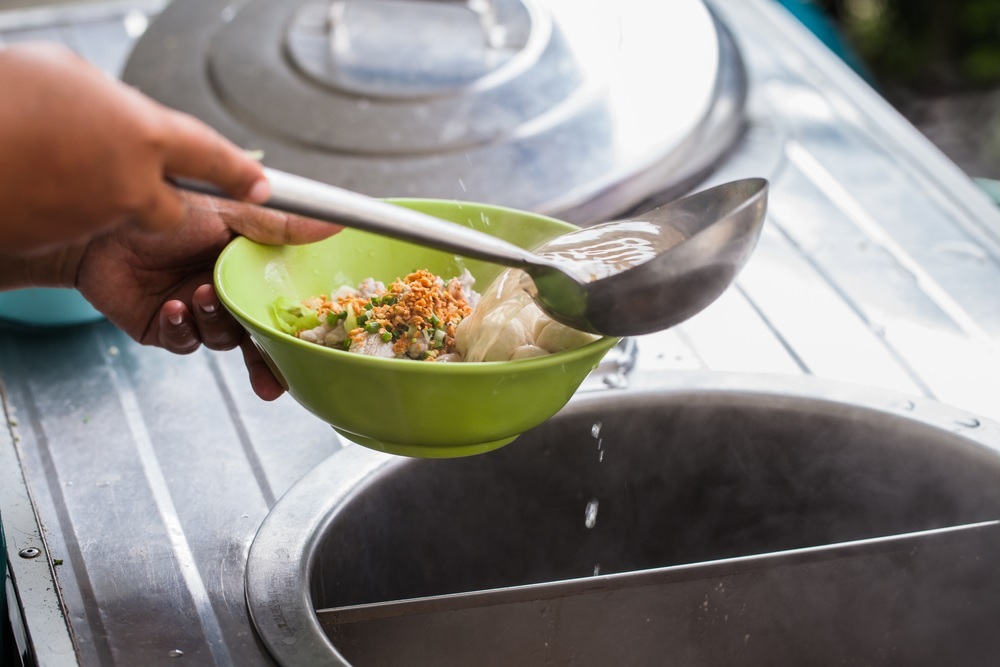Being found between Thailand and Vietnam – two countries well known for typical gastronomy, Cambodia is often overlooked when talking about food. But once you’ve tried Khmer cuisine, never forget it.
Being found between Thailand and Vietnam - two countries well known for typical gastronomy, Cambodia is often overlooked when talking about food. But once you’ve tried Khmer cuisine, never forget it. Let’s talk about Cambodian cuisine in the most 5 popular dishes.
1. Characteristics of Cambodian culinary
The main ingredient of Cambodian cuisine is local specialties such as river fish, pork and vegetables. The way of cooking is influenced by Indian cuisines such as using spicy, sweet and salty spices and many deep-fried dishes.
Khmer cuisine dishes are colorful, full of vegetables or brightly colored fruits. they are assemblages of different foods: they are fragrant that they can smell it from a distance and continue to be hungry from morning to night, without stopping.
2. Why we should try Cambodian food?
I am deeply convinced of the fact that it is impossible to really know a country without coming into contact with the typical cuisine of the place. It is unthinkable to go to the other part of the world and then be in line at McDonald’s or desperate for an Italian restaurant; do you think Italy would be Italy without its magnificent food?
Open your mind to the unknown and let the curiosity run - and get ready to discover what to eat in Cambodia!
3. The most well-known Cambodia dishes
3.1. Amok fish
It is one of the best known Cambodian dishes and a symbol of Khmer cuisine but you will find similar meals in neighboring countries in Indochina. Slok Ngor cannot be completed without a local herb that gives it a slightly bitter taste. Fish amok is a fish mousse with coconut milk and kroeung, a type of Khmer curry paste based on citronella, turmeric root, garlic, shallots, galangal, and ginger root.
At luxury restaurants, amok fish is steamed in a banana leaf, while more local places serve a boiled version that is more like a mousse fish curry soup.
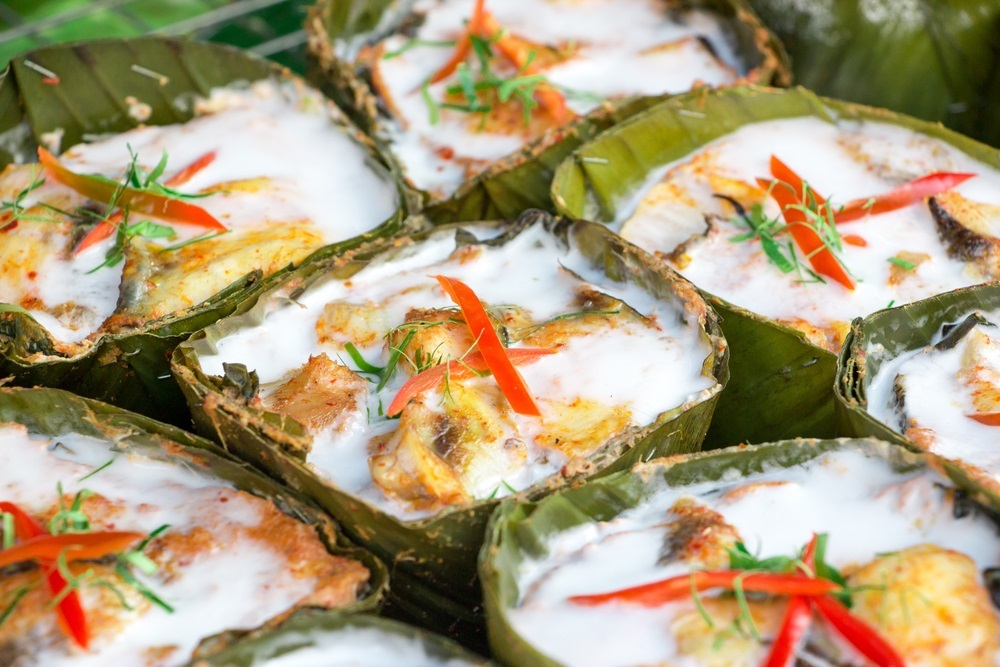
3.2. Bai Sach chrouk: Rice with pork
Served early in the morning on the roads of all of Cambodia street, Bai Sach chrouk means rice with pork, it is one of the simplest and most delicious dishes in the kingdom of Cambodia.
The dish is so simple and kinda looks like Com Tam from Saigon. Pork cut into thin slices is slowly roasted on the hot coals to preserve its natural sweetness. Sometimes the pork will be marinated in coconut milk or garlic. Grilled pork is served on a generous portion of broken rice, with a portion of freshly pickled cucumbers, daikon radish with lots of ginger.
In addition, you served a bowl of chicken broth topped with shallots and fried onions.
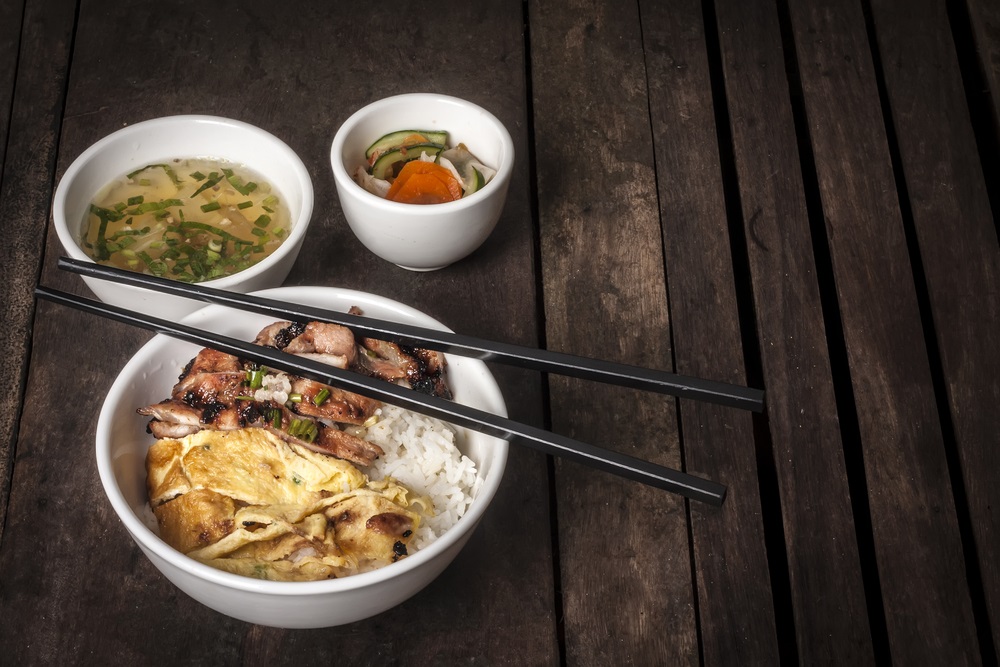
3.3. Khmer red curry
Less spicy than curry from neighboring Thailand, Khmer curry is made from coconut milk, but without the very hot chili pepper. The dish includes beef, chicken or fish, aubergines, green beans, potatoes, fresh coconut milk, citronella, and kroeung. This delicious dish is usually served on special occasions in Cambodia such as weddings, family reunions and religious festivals like Pchum Ben, or Ancestor Day when Cambodians make the dish to share with the monks.
Khmer curry is usually served with bread - a remnant of French influence on Cambodian gastronomy.

3.4. Nom banh Chok: Khmer Noodle
Nom banh Chok is a very popular dish in Cambodia. In English, it is simply called “Khmer Noodle.” Remember: don’t call it “Pho”! Nom banh Chok is a typical breakfast food, and you will find it easily in the morning on the street or market in Cambodia.
The dish is composed of rice noodles, topped with green curry sauce based on fish and lemongrass, turmeric root and lime. Fresh mint leaves, bean sprouts, green beans, banana flowers, cucumbers, and other vegetables are piled on top. There is also a version of Nom Banh Chok with red curry that is usually reserved for ceremonies, wedding parties.
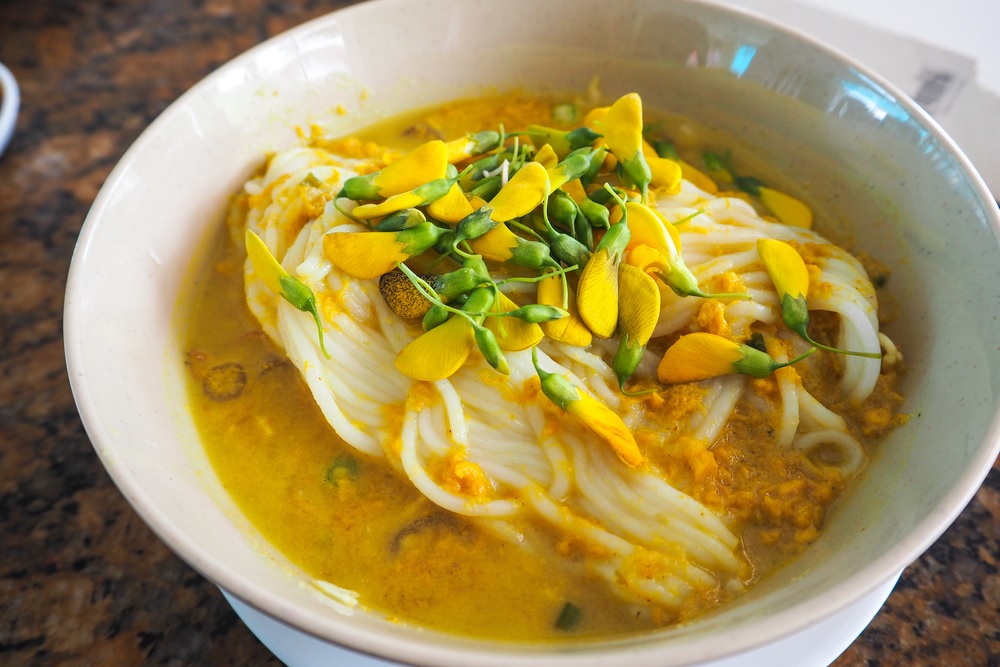
3.5. Chaa Kdam: fried crab
Fried crab is a specialty of the Cambodian seaside town Kep. The local market of Kep is famous for fried crab prepared with green pepper. Kampot pepper is grown locally and is the ingredient in many local dishes. Aromatic Kampot pepper is famous among gourmets around the world. Although it is available in its dry form, you are only able to taste the typically flavored immature pepper in Cambodia.
It’s more worth a visit to Kep and Kampot for fried crab than make dinner at restaurants in Phnom Penh, where you can bring fresh crabs from the coast to make your version of the delicious dish together with Kampot pepper and chives tasty.
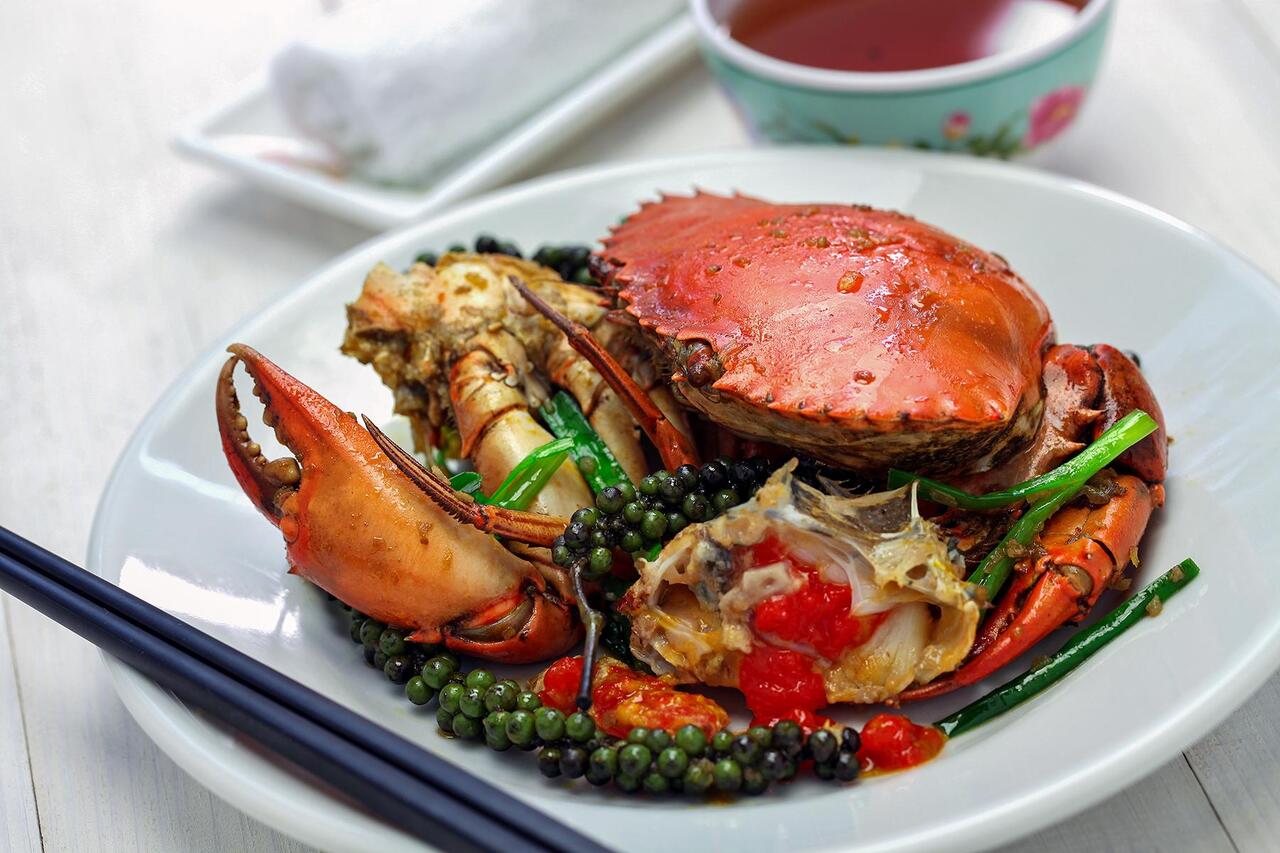
3.6. Lap Khmer - Khmer beef salad
Khmer beef salad cut into thin slices can quickly seared or “cooked” in ceviche style with lime juice. Dress with lemongrass, shallots, garlic, fish sauce, Asian basil, mint, green beans, and green pepper, Khmer lap is no different than Laotian and Thai version. A fresh lap dish that includes more beef than a salad is more preferred by Cambodian people. They also prefer almost raw meat but in restaurants, it is generally served on the grill.
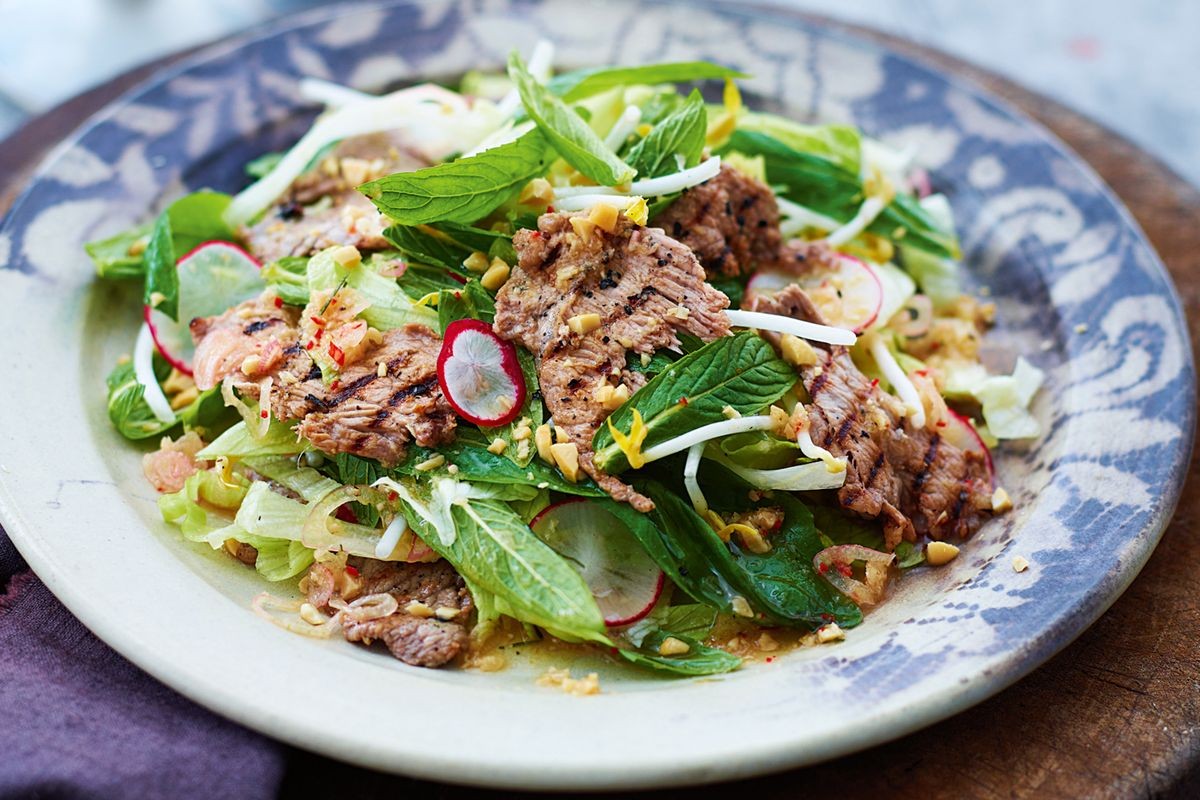
3.7. Cha Houy Teuk - Jelly dessert
After school in Phnom Penh, young people flock around street stalls serving Khmer dessert called Cha Houy Teuk costing only 1,000 riels, about US$ 0.25.
Some types of Cha Houy Teuk have sticky or sago rice soaked in coconut milk and seasoned with taro, red beans, pumpkin, and jackfruit. The most popular type of Cha Houy Teuk is made from agar-agar, a type of gelatin derived from seaweed. The jelly can be brightly colored in pink and green, which makes it particularly popular for children.
Combined with sago, beans and coconut cream, Cha Houy Teuk is usually served in a bowl with very fresh ice. You can also try Cha Houy Teuk after a Cambodian meal in a restaurant.

3.8. Fried fish “on the lake of fire”
The literal translation of this dish is Trei Tappo Kanh Chhet, lake fish by Chhet Kanh.
Fried fish on the lake of fire is a dish traditionally made for parties or eaten at restaurants on a special occasion. Most notably, it is served in a fish-shaped dish.
A whole fish is fried and then put on a plate at the table in a coconut curry made with citronella peppers. Fresh coconut milk is not used in all everyday Khmer dishes. Instead, it is saved for the dishes served on special occasions. Vegetables such as cauliflower and cabbage are cooked in curry and served with rice or vermicelli. This famous Cambodia dish is best served with Tonle Sap fishes.
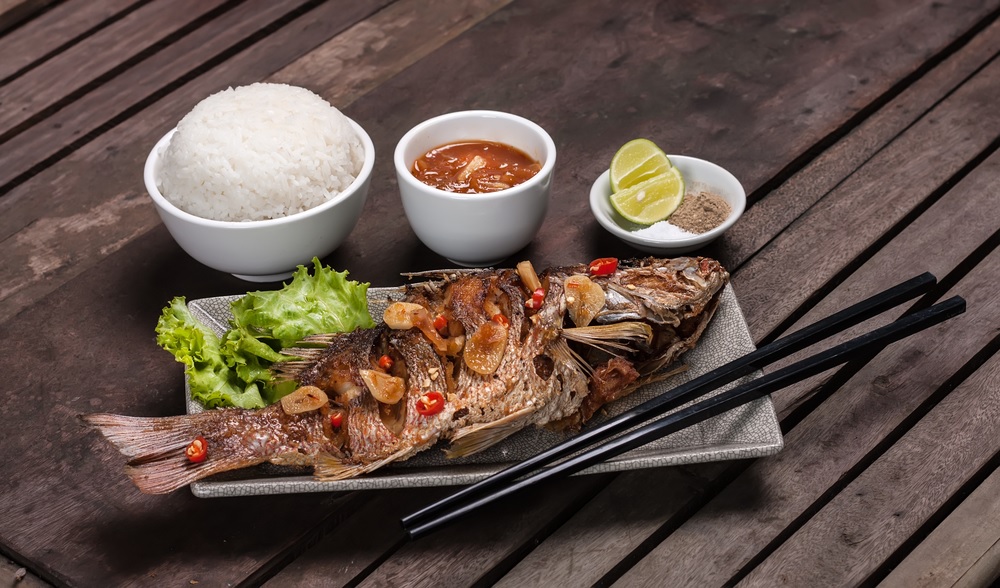
3.9. Red ants flavored with beef and holy basil
You will find many types of insects on the menu in Cambodia, certainly, the Tarantulas are included in the most attractive dish for foreign gourmets: red ants seasoned with beef and holy basil.
Ants of various sizes, some barely visible and are almost an inch long. They are stir-fried with ginger, citronella, garlic, shallots, and thinly sliced beef. A lot of chilies complete the aromatic ant dish.
This meal is served with rice, and if you are lucky you will also receive a portion of ant larvae in your bowl.

3.10. Ang dtray-meuk: grilled squid
In Cambodian seaside towns like Sihanoukville and Kep, you’ll find fish vendors carrying small coal ovens on their shoulders, cooking squid while walking down the street.
Squids are brushed with lime juice or fish sauce and then grilled on wooden skewers. They are served with a popular Cambodian sauce, originating from Kampot, made from garlic, fresh chilies, fish sauce, lime juice, and sugar.
The summer taste of the sea can also be enjoyed in Phnom Penh, where many restaurants make seafood dishes in the original way of the Stray Ang-meuk.
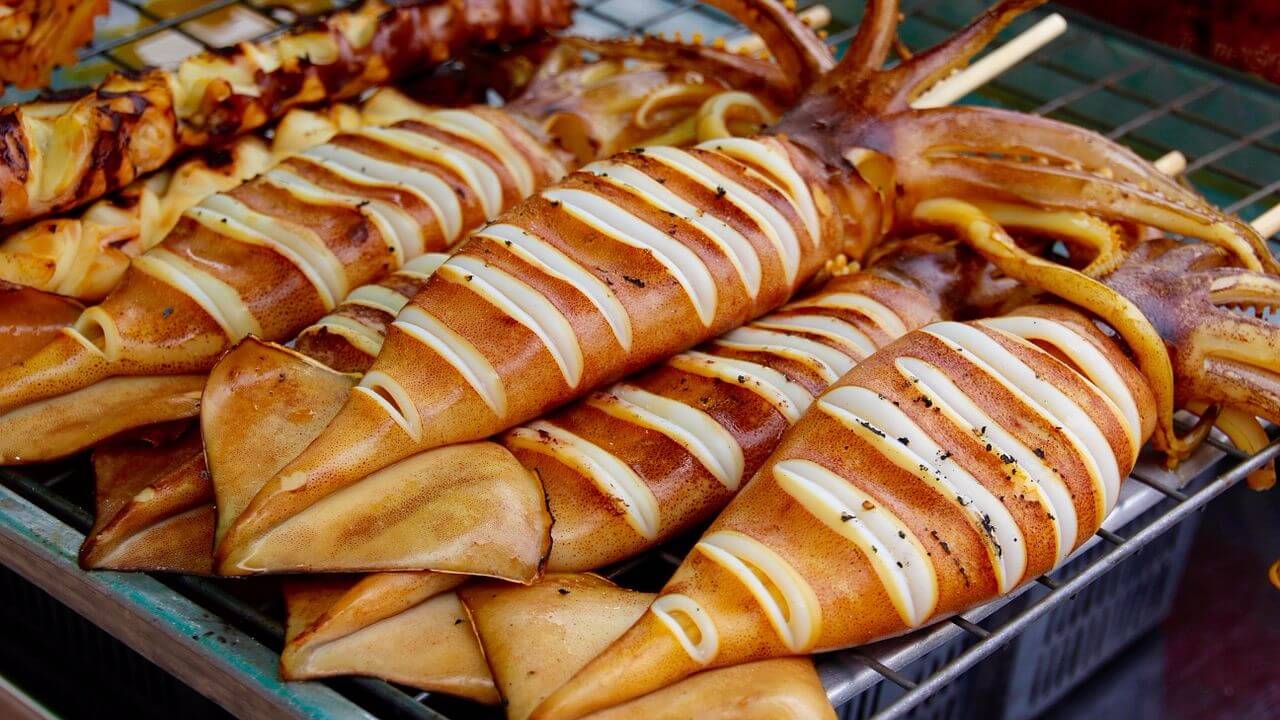
3.11. Lort cha fried noodles
Cambodian and Vietnamese cuisine has very similar characteristics. The lort cha has the same cooking method as the egg-fried noodles in Vietnam. A plate of lort cha consists of: thick sliced noodles, stir-fried at the same price, fresh onions and fried eggs served with chili sauce and soy sauce. It can be said that Cambodian specialty lort cha is very similar to the egg-fried noodles sold throughout the sidewalks in Vietnam.
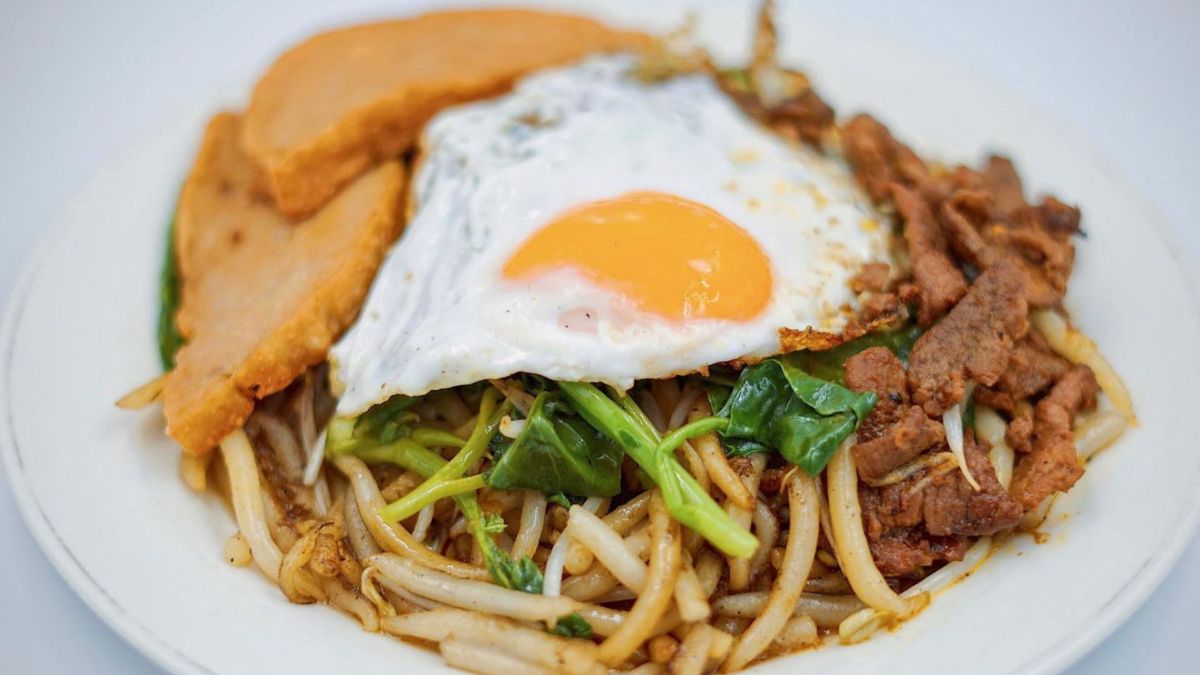
3.12. Braised fish
Tasting braised fish once you will remember Cambodia for a lifetime because the taste is very unique, bringing an indescribable feeling. After frying, fish is put in a pot, spread evenly, sweet and sour coconut curry from head to tail, then served with rice noodles and vegetables such as cabbage, basil …
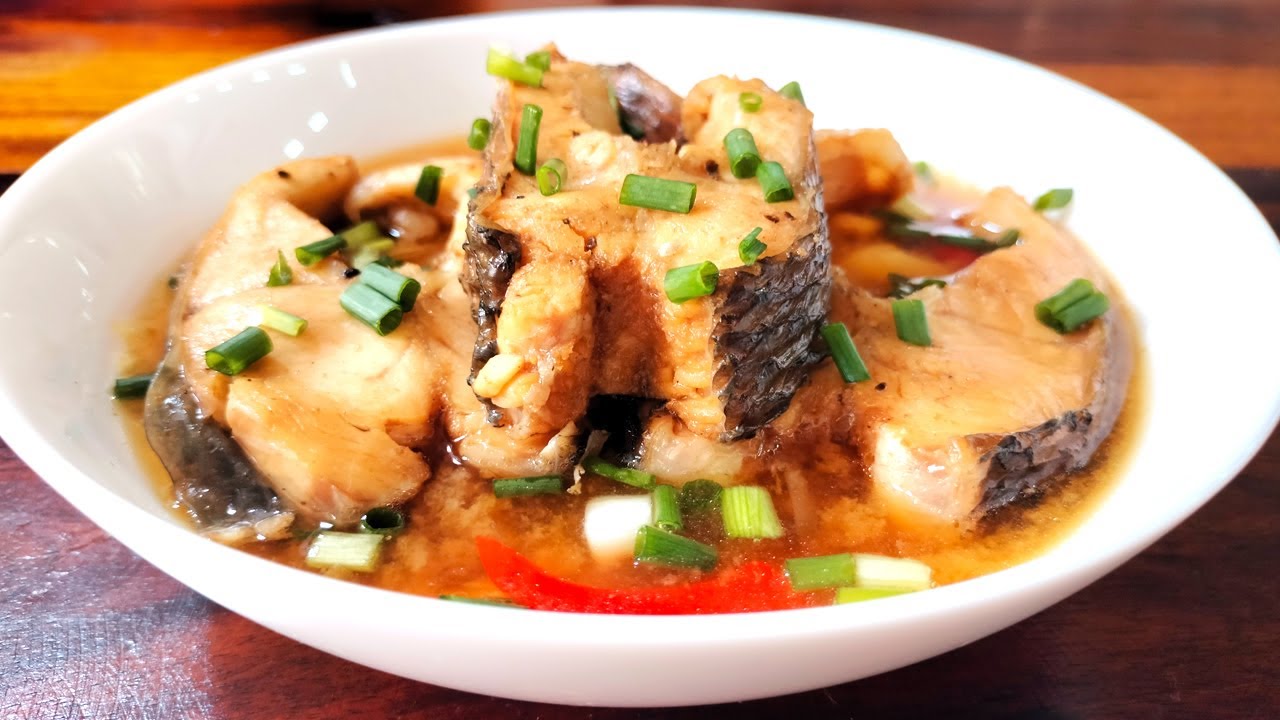
3.13. Fried insects
In the “country of the pagoda”, fried insects are sold everywhere at very cheap prices. Insects have many types such as: crickets, cockroaches, stink bugs, cauliflower, scorpions … are seasoned with very typical Cambodian spices, then fried and sold to customers. The insects are given by the owner on skewers, each skewer ranges from 5,000 - 10,0000 VND very cheap. Your suggestion is that the fried tomato cuong dish is very delicious and cheap. If you do not eat cockroaches, do not try, because the smell of fried cockroaches is very “strange”.
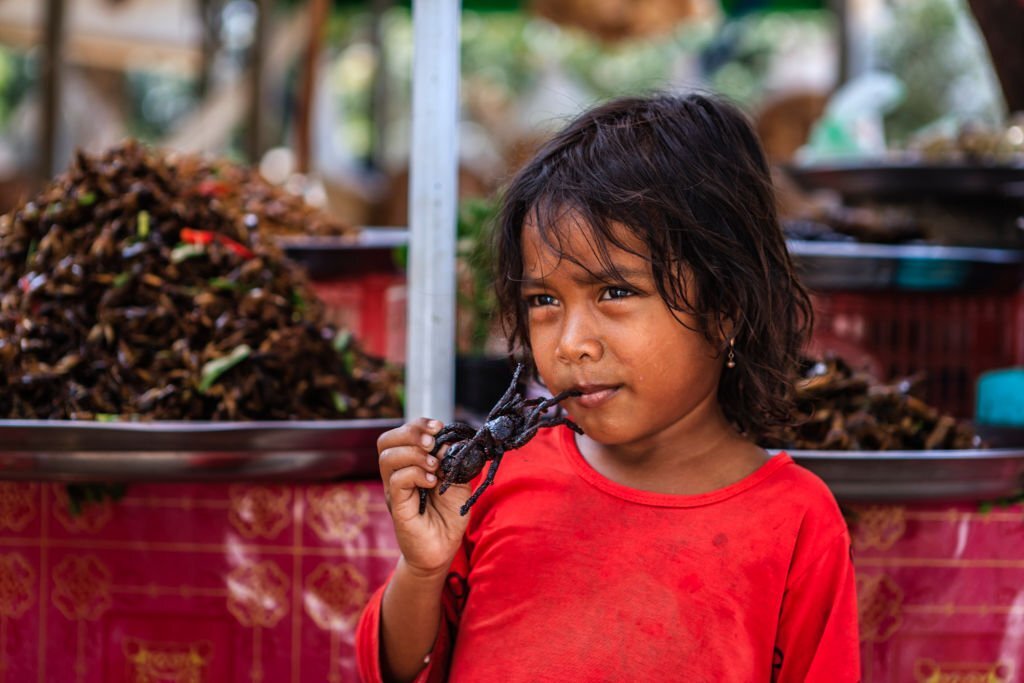
3.14. Pohok - fish sauce
Pohok fish sauce, made from the best fry, is cut open with salt and put in a closet, a few months later to eat. It can be said that this is a traditional dish prepared in Cambodian culinary life. Unlike Vietnamese fish sauce, the soot fish sauce is very salty because it is only salty and colorless. This is considered a specialty dish of Cambodia. Pohok sauce was created by people when fishing in Bien Ho is not used up and is reserved for use.
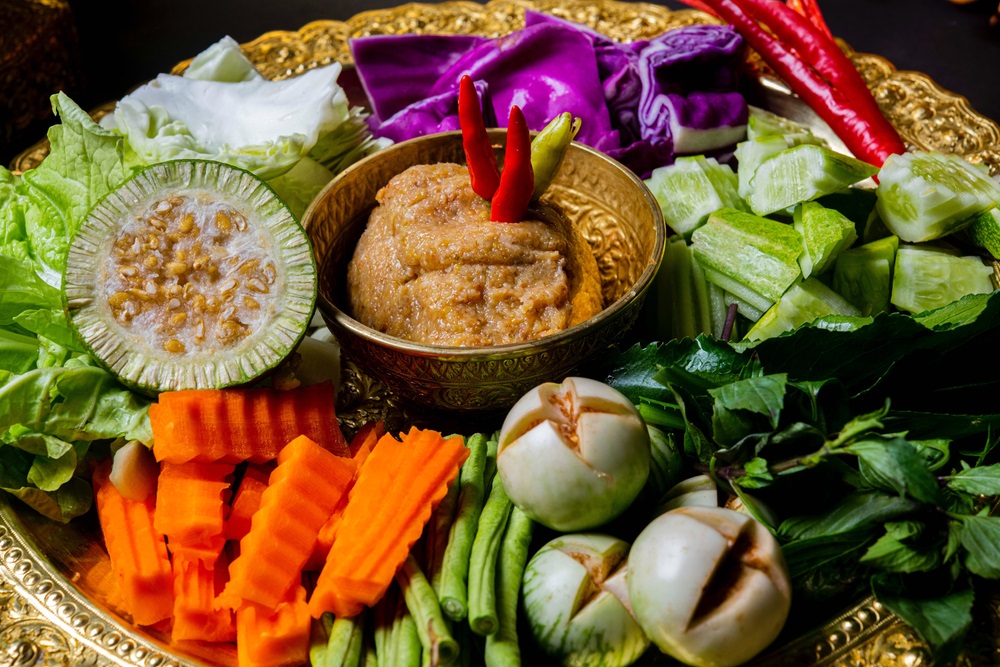
3.15. Nam Vang rice noodles
Nam Vang Noodle Soup is a Vietnamese noodle dish made by Vietnamese living in Phnom Penh in a style suitable for the rich freshwater fish and shrimp area in Bien Ho, so it adds a taste of shrimp and fish and is sold first in Phnom Penh. The main ingredient is chewy noodles, the main broth is pork bones or pork ribs. After this, add pork and cook each bowl. After that, squeeze the rice noodles to taste well cooked, add the extra ingredients such as bean sprouts, chives, shrimp, squid, fish, minced meat and pork belly. This is considered a delicious dish, later popularized instead of noodles with only traditional pork bones. Depending on the taste of each person, the pig’s heart can be replaced with shrimp, crab, and squid.
